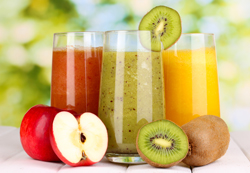
Juicing is an excellent way to get plant-based nutrients, especially if you avoid eating most fruits and veggies. It can also be a great way to incorporate a wider variety of fruits and vegetables into your diet because, let's face it, when was the last time you enjoyed a big bowl of kale? Or fresh ginger? Or chomped down on a handful of fresh parsley, for that matter?
Juicing those less popular veggies and herbs, along with apples, carrots, and celery, is a simple, delicious, and tremendously healthy way to get your body's nutrients.
People often ask, "What can I do with all the pulp left over from juicing?"
Here are a few suggestions:
- Add the fruit and veggie pulp to muffins.
- Add the veggie pulp to soups and stews.
- Compost. If you aren't composting, now might be a great time to start! You can add the pulp from your juicer directly to your garden soil, but the better choice would be to add the juicer pulp to a compost pile to allow it to decompose a few days before using it on your plants.
Even though juicing is an excellent way to get the many nutrients in fruits and vegetables, remember also to eat a few servings daily. Nutritionists recommend that you consume two whole fruits and three to four vegetables a day in addition to juicing. The vegetables should be different colors, as the colors offer a variety of vitamins and minerals.

